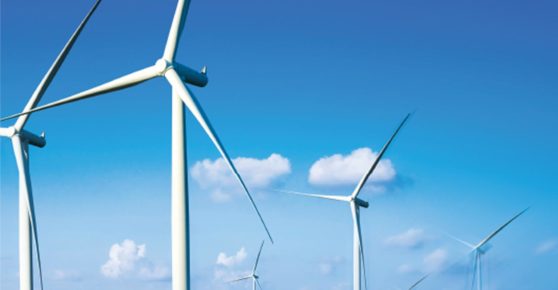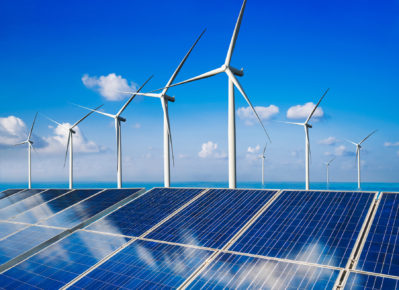Guide to Carbon Emissions: Scope 1, 2 and 3
Many companies are implementing their own sustainability goals to comply with standards, meet environmental, social and governance (ESG) goals, and find areas of improvement for efficiency. Before you can build a strategy to reduce your company’s greenhouse gas (GHG) emissions, you must assess your current carbon footprint.
The Greenhouse Gas Protocol developed accounting standards that define three categories, or “scopes,” of emissions. These scopes, which outline who owns or influences the emissions, as well as how much control a company has over them, can help your company understand where you currently stand and how to move toward zero emissions most effectively.
In this second installment of our sustainability series, we explain the three scopes of emissions and explore a few key tactics that can be used to reduce them. (For a primer on greenhouse gases, make sure to read the first blog post of the series.)
Three Scopes of Carbon Emissions
Your company’s greenhouse gas emissions can be categorized into three scopes, as defined by the GHG Protocol. This allows you to measure your emissions and think strategically about how to reduce them more effectively.
Scope 1 emissions are direct emissions from sources owned or controlled by a company, such as onsite generation, natural gas use, and fleet fuel consumption. In other words, these emissions are a direct result of a company’s activities. Because of this, scope 1 emissions are generally considered the easiest for a company to control and reduce.
Scope 1 emissions can be broken down into four categories:
- Stationary combustion: This includes emissions that come from the combustion of fossil fuels, like a boiler that heats a building. Other fuels that may be included in these activities include natural gas, liquified petroleum gas, oil and propane.
- Mobile combustion: This category covers the fuel burned by vehicles that a company owns or leases, such as cars, trucks or vans fueled with gas or diesel.
- Fugitive emissions: This category encompasses unintentional leaks of greenhouse gases. For example, an HVAC system may leak refrigerants, which are classified as chlorofluorocarbons or hydrofluorocarbons and are potent greenhouse gases.
- Process emissions: These emissions are released during industrial processes and onsite manufacturing, such as iron or steel production.
Scope 2 emissions are indirect greenhouse gas emissions that are not directly released by the company itself. This could include, for example, the generation of electricity purchased from a utility provider. There are four main forms of energy that are tracked under this category: electricity, steam, heat, and cooling. The generation of these forms of energy produce greenhouse gases. However, the company is considered responsible for those particular emissions because it created the demand for and purchased the energy.
Scope 3 emissions include indirect emissions from other sources, such as company travel and supply chain management. These emissions aren’t produced directly by the company’s activities, but they occur within the value chain as a result of the company’s operations.
Scope 3 emissions fall into 15 categories, including but not limited to transportation and distribution, purchased goods and services, employee commuting, and leased assets. These categories represent activities both upstream and downstream of the company’s core operations.
Companies often find that scope 3 emissions are more difficult to track and manage. For this reason, measuring these emissions is not required according to the GHG Protocol. However, controlling these emissions can make a significant impact. In many cases, scope 3 emissions account for more than 70% of a business’s carbon footprint, according to a Deloitte study.
Reducing Emissions Through RECs and Carbon Offsets
Based on these categorizations of emissions, most companies must take a multi-pronged approach to reduce their carbon footprint. Different tactics can target different types of emissions.
For instance, to reduce scope 1 emissions you can implement energy efficiency projects within your facilities. Because energy efficient equipment and machinery lower your energy consumption, these upgrades can help you directly avoid emissions. To reduce emissions associated with natural gas use, companies may opt to use renewable natural gas (RNG), which is pipeline-quality natural gas derived from the decomposition of organic matter, also known as biogas.
Scope 2 emissions can be reduced by purchasing energy attribute credits (EACs) to match all or a portion of your electricity use. EACs represent the environmental attributes or benefits of different forms of electricity generation, and from an emissions accounting standpoint, purchasing EACs is equivalent to purchasing electricity directly from an emission-free generator. Two primary types of EACs include renewable energy certificates (RECs) and emission-free energy certificates (EFECs).
Scope 1, 2 and 3 emissions can all be indirectly reduced through the purchase of carbon offsets.
RECs and EFECs
Each REC represents the renewable qualities or attributes associated with one megawatt hour of electricity that is generated and sent to the electricity grid by a renewable energy source, like wind, solar, solid waste or geothermal. RECs are useful because on a shared grid, companies are often unable to track where or how a particular portion of energy was generated. RECs allow you to verify your use of zero- or low-emissions renewable energy sources.
Similar to a REC, an EFEC represents the emission-free attributes associated with one megawatt hour of electricity generated and sent to the electricity grid by a source that does not emit greenhouse gases during the generation process, such as nuclear, hydropower, wind or solar.
Through RECs and EFECs, which can be purchased and sold separately from the underlying power contract, you can ensure electricity use is matched with renewable or emission-free attributes, which reduces your company’s scope 2 emissions.
Carbon Offsets
Carbon offsets allow companies to indirectly counteract their greenhouse gas emissions by supporting investment in carbon reduction projects. Offsets are measured in metric tons of carbon dioxide equivalent and represent verified greenhouse gas emission reductions. Because of this, carbon offsets can be used to reduce scope 1, 2 and 3 emissions.
Through carbon offsets, you can support investment in environmental projects around the world to balance out your own emissions. Projects may support a range of initiatives, such as reforestation, carbon-storing agricultural practices, and waste and landfill management. These are often based in developing countries and are focused on reducing future emissions. Also, renewable energy projects may be eligible to create carbon offsets if the projects prevent fossil-fuel-fired generators from operating and creating carbon emissions. (Renewables projects may be eligible to create RECs or offsets but not both.)
The strategies your company uses will depend on your current carbon footprint and your commitment to reducing greenhouse gas emissions. For a complete guide to developing a strategy to move toward zero emissions, download the guide, “4 Steps to Documenting Your Sustainability Plan.” Or, if you want more personalized guidance, get in touch to speak with one of our knowledgeable energy representatives.
In the next blog post of this series, we will break down how to analyze your company’s energy data so you can pinpoint areas for improvement, as well as essential components of a successful sustainability plan.
Based on current World Resources Institute (WRI) guidance. Scope 2 reporting claims of this product may be affected by future changes.

























